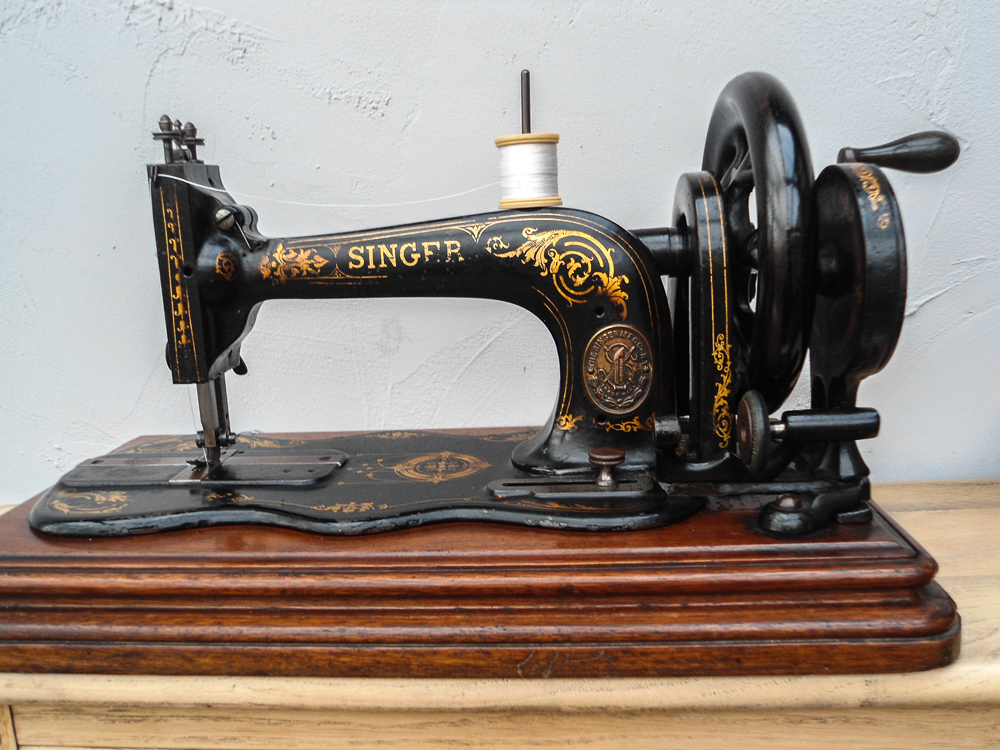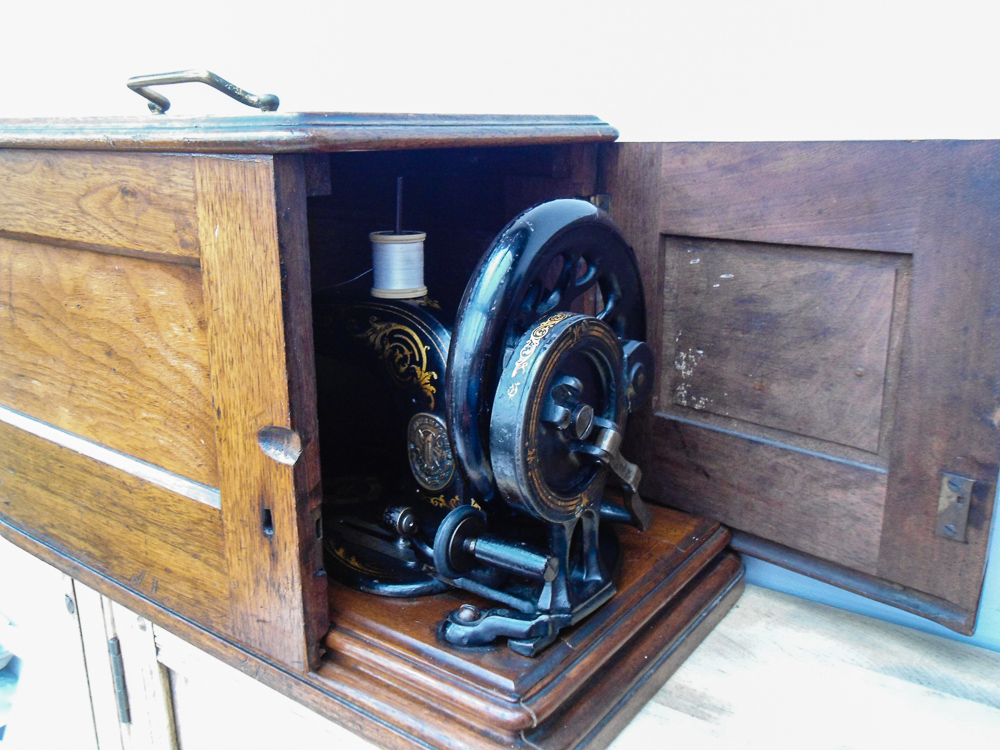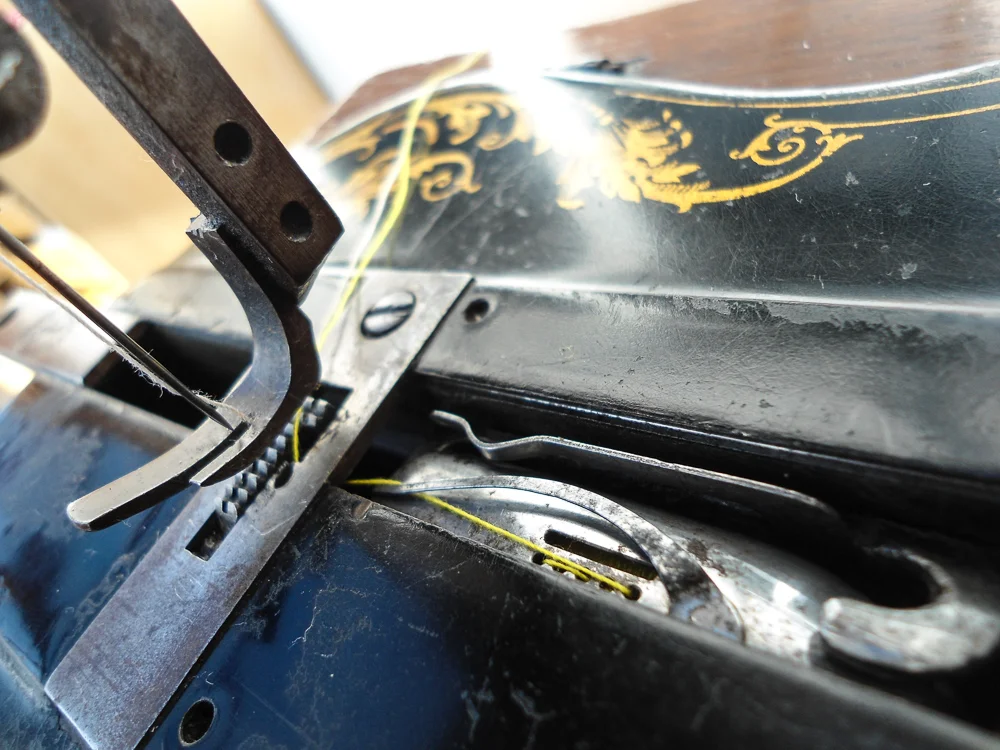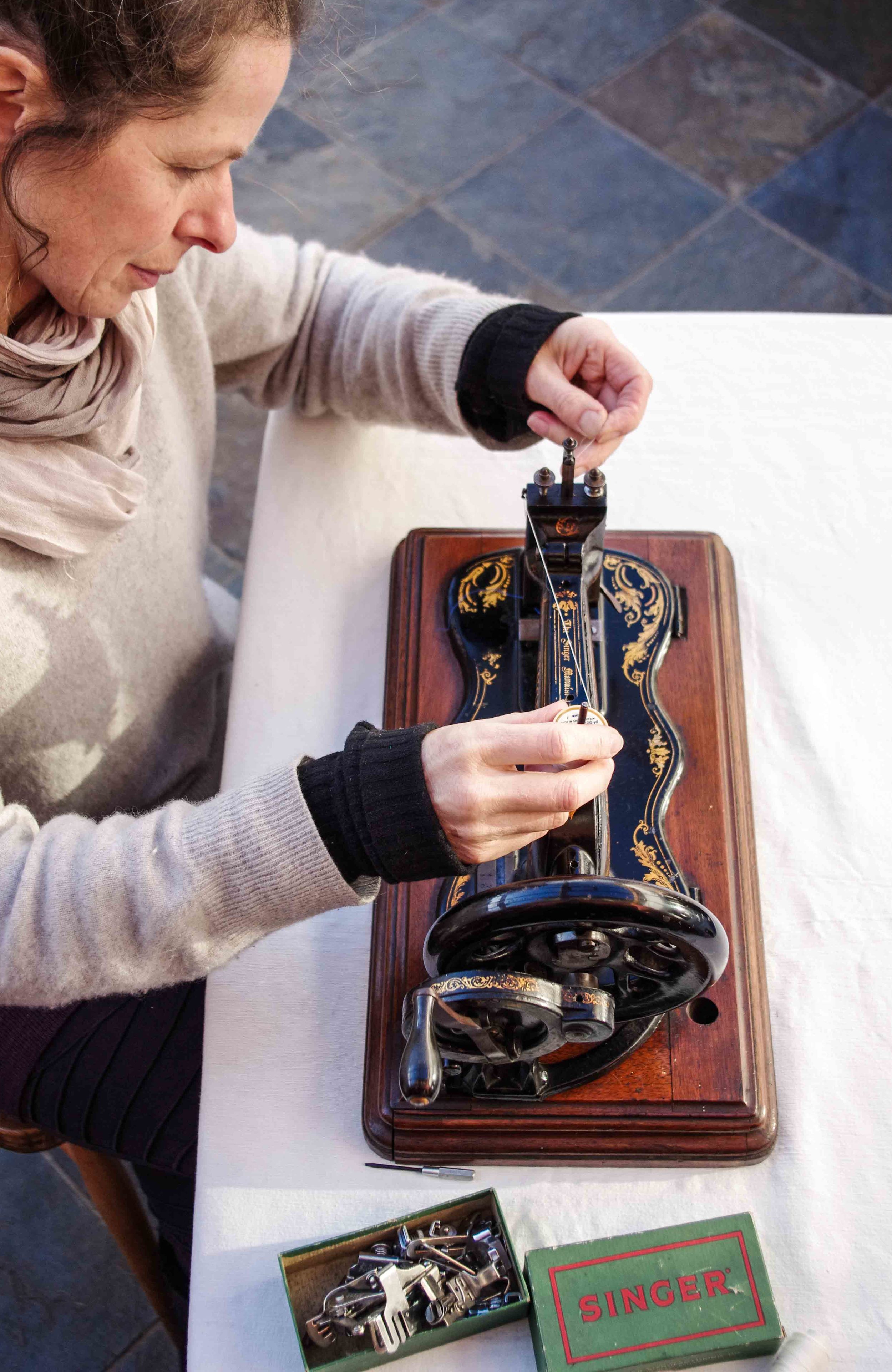I would like to introduce you to my collection of sewing machines.
I first learnt to sew on a hand operated Singer machine. My Granny did loads of sewing on her Singer treadle machine, and I loved to use that too. My Mum had an old Singer which had been converted to electricity. I have a great appreciation for something well made, and, maybe I’m biased, but I believe that old Singer sewing machines are the epitome of something well made.
So I have acquired, and hung on to a few of them.
The Singer model 12(Or the Singer ‘New Family’) (Or the Singer ‘Fiddle Base’)
Even the box is a lovely thing. The end opens, and the top slides off along the grooved base.
The bobbin is placed in the winding mechanism, and is wound by turning the crank while also releasing the thread by hand.
The bobbin is placed into the ‘boat’ shuttle. The thread is then threaded through a series of slots and holes to obtain the correct tension. The more times it is threaded backward and forwards through the holes in the side, the higher the tension will be.
The shuttle in place. As the machine stitches, the shuttle passes through the loop of thread made by the needle to create each stitch.
A perfect stitch every time!.
When I acquired this machine it was in a pretty bad way. I spent time cleaning and oiling it and getting everything moving again. It now runs like a dream, and stitches amazingly. I love to work out the controls on an old machine like this. Nothing much has changed over the years, but there are always a few new (or old!) techniques to learn about. The main difference between this, and other machines that I have used, is the winding mechanism for the bobbin, and the transverse shuttle.
The model 12 was first marketed in 1865, and remained in production for over 40 years. Its very reliable design meant that it was sold in very high volumes, and was the machine that really established Singer as the market leader. This one was made in 1881. (135 years old!!) I have read that when the Singer New Family was first produced, it cost the equivalent of a year’s wages. Many people would have bought these through an instalment payment scheme, over a period of ten years. (I bought this last year on Ebay for around £40.00!)
If you have an old Singer, and want to know when it was made, look for a serial number on the base of the machine. Every one made by the Singer Manufacturing Company has a number. Find out more information about this on the Sew A Lot website - www.sewalot.com.















